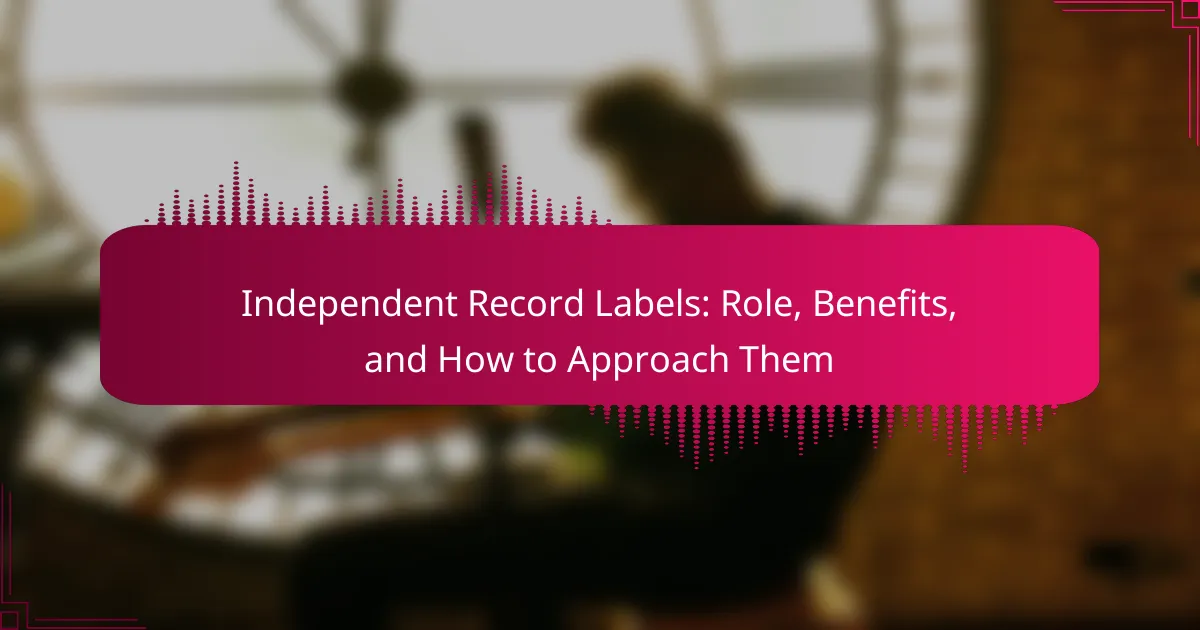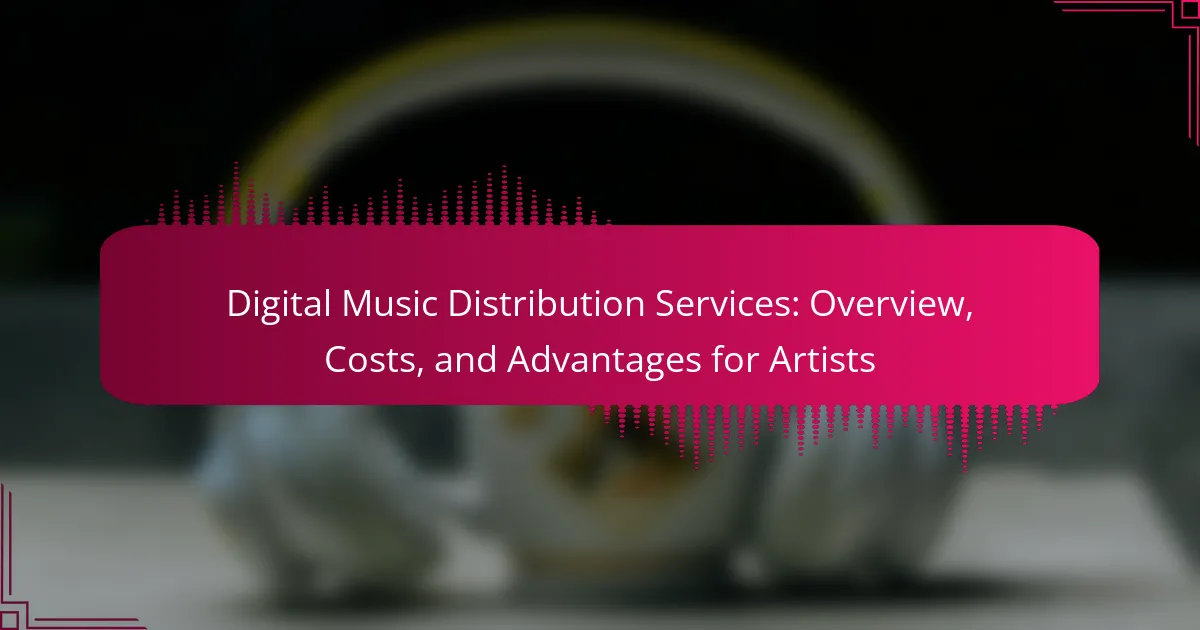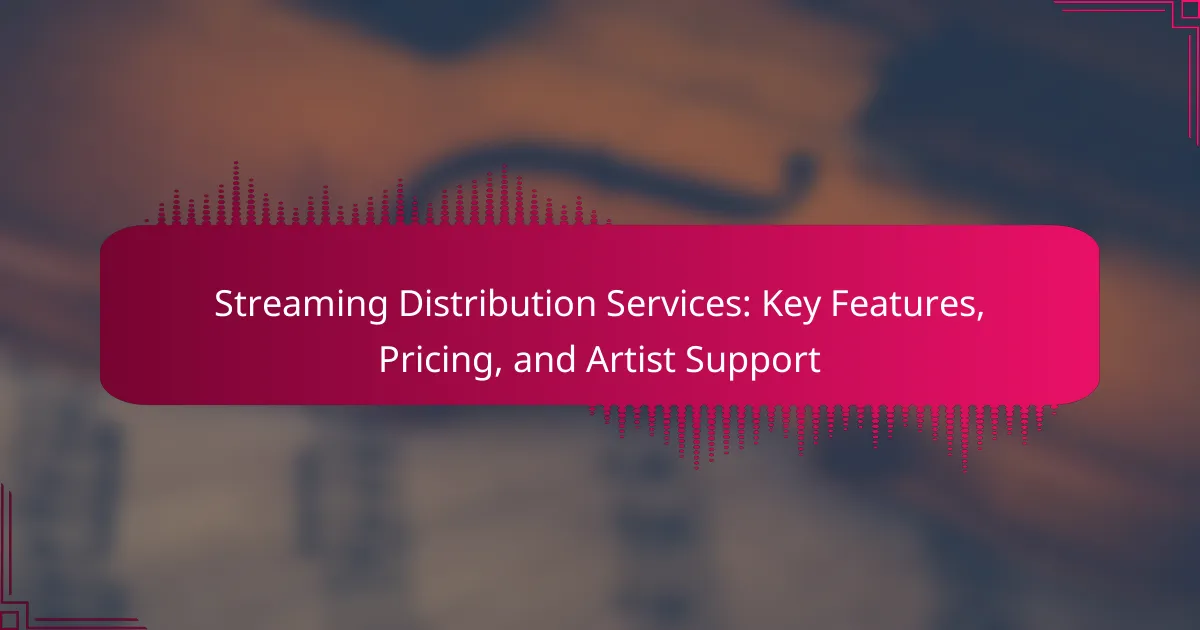Navigating music distribution agreements can significantly impact an artist’s career and revenue. Key components include rights granted, payment terms, and duration. Effective negotiation strategies focus on understanding essential clauses and avoiding common pitfalls. Regional differences and emerging trends also play a vital role in shaping favourable agreements.
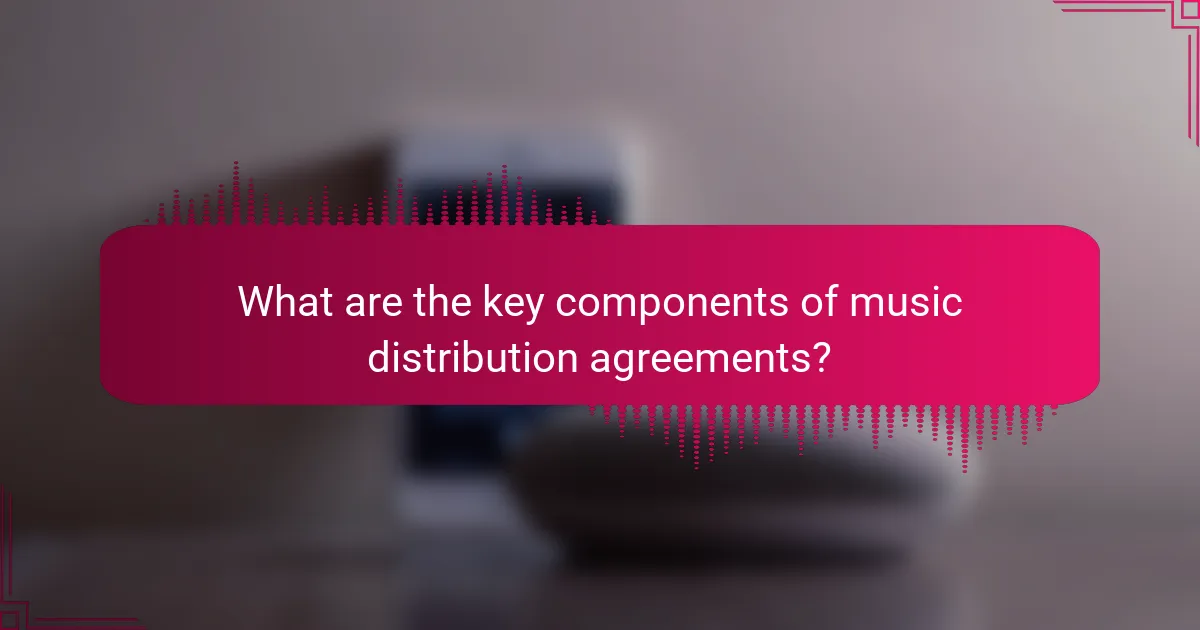
What are the key components of music distribution agreements?
Music distribution agreements typically include key components such as rights granted, payment terms, duration, and termination clauses. These elements define how music is distributed, how artists are compensated, and the length of the agreement. Additionally, clauses addressing royalties, marketing responsibilities, and ownership of master recordings are crucial. Understanding these components helps artists negotiate favourable terms and avoid common pitfalls.
How do royalties work in music distribution agreements?
Royalties in music distribution agreements are payments made to artists based on their music’s sales and streams. These agreements typically outline the percentage of revenue shared between the distributor and the artist. Key factors influencing royalties include the type of distribution model, such as digital versus physical sales, and the specific terms negotiated, like advance payments and recoupment clauses. Understanding these elements helps artists maximise their earnings and avoid common pitfalls.
What rights are typically granted in these agreements?
Music distribution agreements typically grant rights related to the distribution, reproduction, and performance of music. Key rights include the right to distribute recordings, collect royalties, and license the music for various uses. These agreements often specify geographic territories, duration of rights, and revenue sharing percentages. Understanding these rights is crucial for artists to maximise their income and control over their work.
Which parties are involved in music distribution agreements?
The parties involved in music distribution agreements typically include record labels, distributors, and artists. Each party plays a crucial role in the distribution process, ensuring music reaches audiences effectively. Record labels often handle marketing and promotion, while distributors manage the logistics of getting music to various platforms. Artists focus on creating the music and may negotiate terms for royalties and rights.
What is the duration of music distribution agreements?
The duration of music distribution agreements typically ranges from one to five years. Factors such as the type of distribution service and artist’s negotiation can influence this timeframe. Shorter agreements may allow for flexibility, while longer terms can secure stability in distribution.
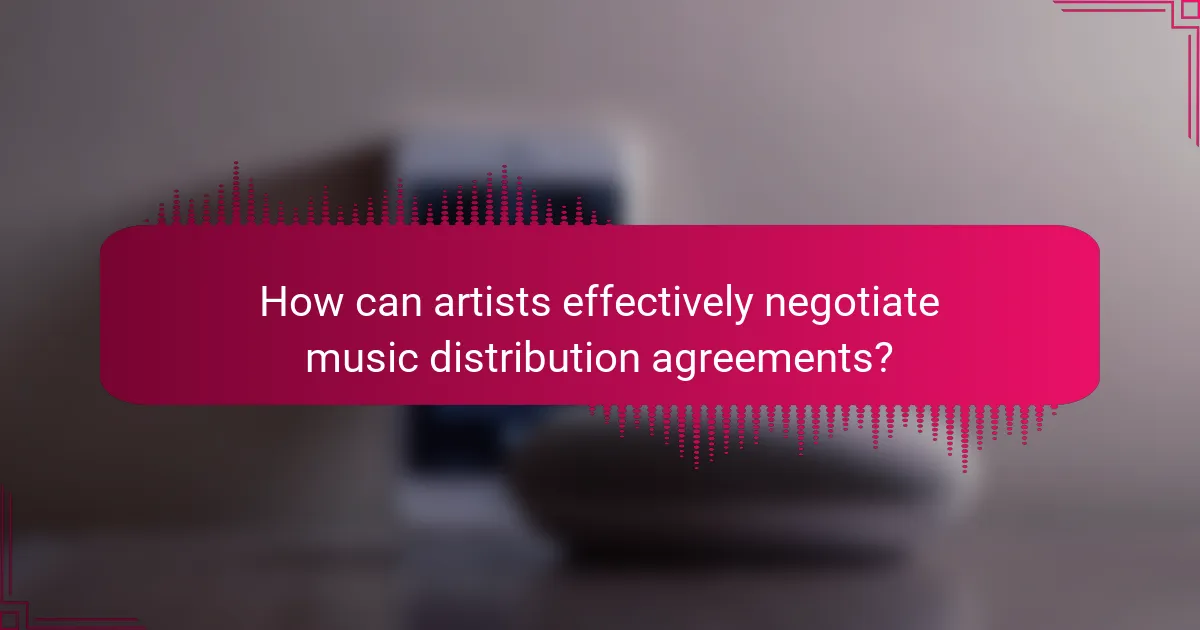
How can artists effectively negotiate music distribution agreements?
Artists can effectively negotiate music distribution agreements by understanding key terms and advocating for their interests. Start by identifying essential clauses such as royalty rates, distribution territories, and payment schedules. Research industry standards to establish a baseline for negotiations. Prioritise clear communication and be prepared to discuss your specific needs and goals. Avoid common pitfalls like overlooking fine print or accepting unfavourable terms without question. Consider seeking legal advice to ensure your rights are protected throughout the agreement process.
What strategies can artists use to strengthen their negotiating position?
Artists can strengthen their negotiating position by preparing thoroughly and understanding their value. Research industry standards and gather data on comparable agreements to leverage during discussions. Building relationships with industry professionals can also enhance credibility and support. Clearly define goals and priorities before negotiations to stay focused on key outcomes.
How does understanding the market impact negotiation outcomes?
Understanding the market significantly enhances negotiation outcomes in music distribution agreements. Knowledge of industry trends, competitor strategies, and audience preferences allows negotiators to leverage their position effectively.
Market awareness enables parties to identify unique attributes, such as emerging platforms or distribution methods, that can be pivotal in negotiations. For instance, recognising the rise of digital streaming can lead to more favourable terms for artists regarding revenue shares.
Additionally, understanding market dynamics helps in anticipating potential pitfalls, such as overcommitting to unfavourable contract terms. By being informed, negotiators can advocate for essential terms that align with current market standards, ensuring a balanced agreement.
Ultimately, a comprehensive grasp of the market equips negotiators with the insights needed to achieve optimal outcomes in music distribution agreements.
What common negotiation tactics should artists be aware of?
Artists should be aware of negotiation tactics such as anchoring, framing, and building rapport. Anchoring involves setting a reference point for discussions, which can influence outcomes. Framing focuses on presenting options in a way that highlights benefits. Building rapport fosters trust, making negotiations smoother. Understanding these tactics can enhance an artist’s position in music distribution agreements.
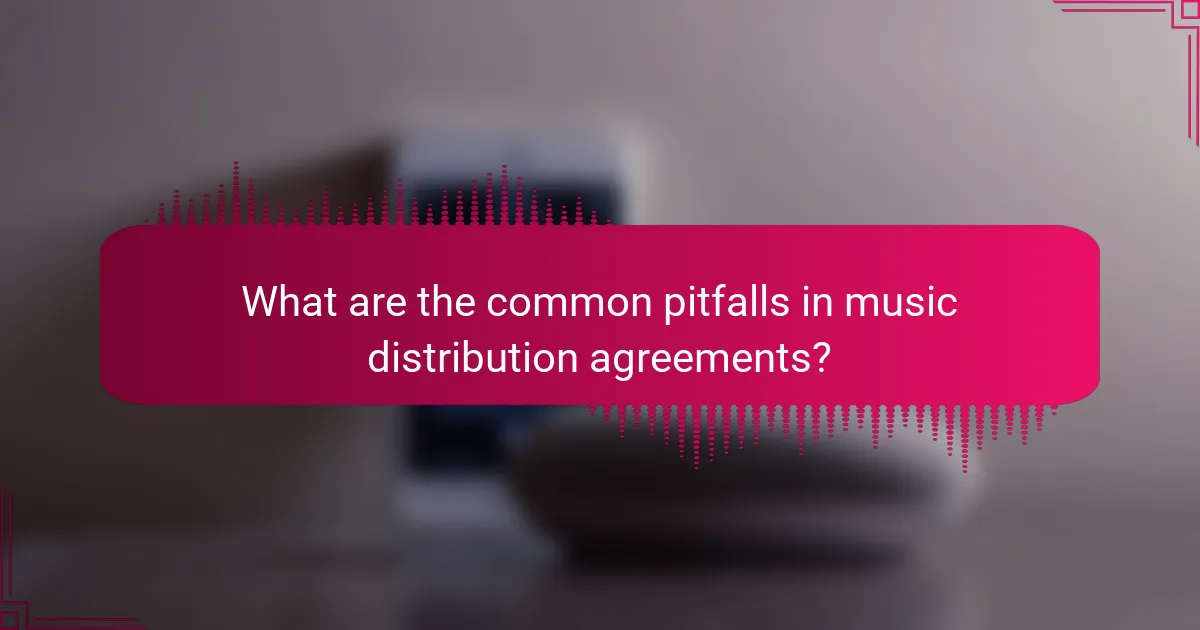
What are the common pitfalls in music distribution agreements?
Common pitfalls in music distribution agreements include unclear terms, hidden fees, and lack of rights clarity. Artists often overlook the importance of understanding revenue splits and retention periods. Failure to negotiate favourable terms can lead to long-term financial disadvantages. Additionally, not addressing territorial restrictions may limit an artist’s market reach.
What mistakes do artists often make when signing agreements?
Artists often overlook critical details in music distribution agreements, leading to unfavourable outcomes. Common mistakes include failing to understand royalty structures, neglecting to negotiate terms, and not clarifying ownership rights. Additionally, artists may miss deadlines for signing or overlook the importance of legal counsel, which can result in signing agreements that are not in their best interest. Awareness of these pitfalls can help artists secure better deals.
How can unclear terms lead to disputes later on?
Unclear terms in music distribution agreements can lead to disputes by creating ambiguity in rights and obligations. When terms are not clearly defined, parties may interpret them differently, resulting in conflicts over revenue sharing, distribution territories, and ownership rights. This lack of clarity can hinder effective negotiation and ultimately damage professional relationships. Clear, precise language is essential to prevent misunderstandings and ensure all parties have aligned expectations.
What are the implications of not understanding distribution fees?
Not understanding distribution fees can lead to significant financial losses for artists. These fees affect revenue from music sales and streaming, impacting overall earnings. Artists may overlook hidden costs, resulting in lower profit margins. Additionally, misunderstanding these fees can hinder negotiation power, leading to unfavourable contract terms. This lack of clarity may also affect budgeting and financial planning for future projects.
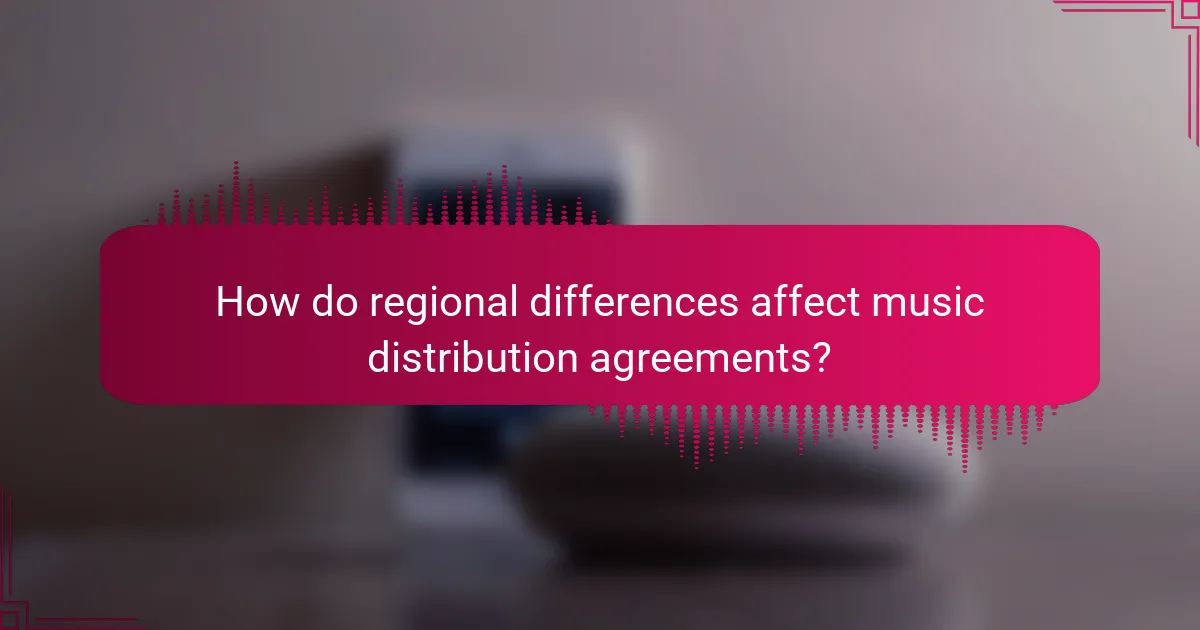
How do regional differences affect music distribution agreements?
Regional differences significantly impact music distribution agreements by influencing market access, legal frameworks, and cultural preferences. These factors can determine the terms of revenue sharing, rights management, and promotional strategies. For instance, in regions with strong copyright laws, artists may secure better royalties. Conversely, in areas with less regulation, agreements might favour distributors. Understanding these regional nuances is essential for effective negotiation and maximising revenue potential.
What variations exist in music distribution practices between regions?
Music distribution practices vary significantly between regions due to cultural, legal, and technological factors. For instance, in North America, digital distribution dominates, while in parts of Africa, physical formats remain popular. European countries often emphasise local laws protecting artists. Additionally, regions with emerging markets may prioritise mobile distribution methods. These variations reflect the unique needs and behaviours of music consumers globally.
How do local laws influence agreement terms?
Local laws significantly shape the terms of music distribution agreements by dictating legal requirements and rights. Regulations may affect copyright, royalties, and dispute resolution processes. Compliance with local laws ensures agreements are enforceable and protect the interests of all parties involved. For example, jurisdictions may have varying rules on statutory royalties, which can alter payment structures. Understanding these legal frameworks is crucial for effective negotiation and to avoid common pitfalls.
What are the cultural factors that shape music distribution strategies?
Cultural factors significantly influence music distribution strategies by shaping audience preferences and industry practices. Regional music tastes dictate the platforms preferred for distribution. For instance, countries with strong local music scenes may favour domestic streaming services over global ones.
Social media trends affect how artists promote their music and engage with fans, impacting distribution choices. Additionally, cultural attitudes towards music consumption, such as piracy and support for local artists, can dictate legal frameworks for distribution agreements.
The rise of diverse genres and cross-cultural collaborations necessitates flexible distribution strategies to accommodate varying audience expectations. Understanding these cultural nuances is essential for effective negotiation and contract formulation in music distribution agreements.
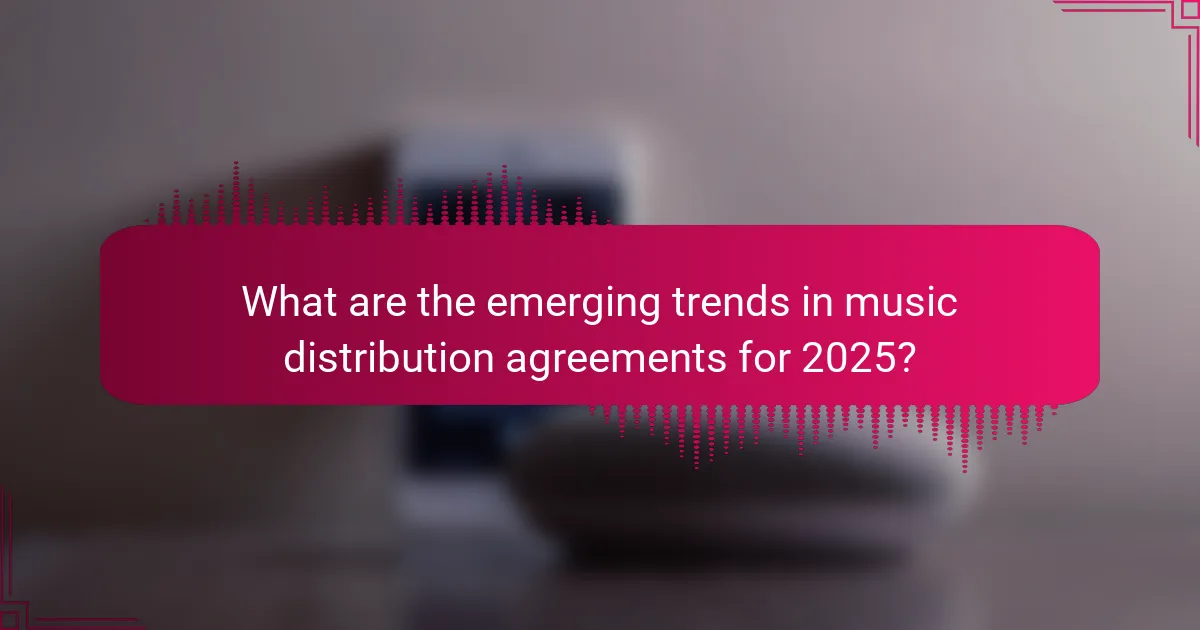
What are the emerging trends in music distribution agreements for 2025?
Emerging trends in music distribution agreements for 2025 include increased focus on digital platforms, flexible revenue-sharing models, and enhanced data analytics for artists. Labels prioritise direct-to-fan distribution, enabling artists to retain more control and profits. Additionally, blockchain technology is gaining traction, providing transparency and security in royalty payments.
How is technology reshaping distribution models?
Technology is transforming music distribution agreements by enhancing accessibility and streamlining negotiations. Digital platforms enable artists to reach global audiences directly, reducing reliance on traditional labels. This shift encourages fairer terms and transparency in contracts, allowing independent musicians to negotiate better deals. Additionally, data analytics tools provide insights into listener preferences, helping artists tailor their distribution strategies effectively. As a result, technology fosters a more equitable music industry landscape.
What role do independent distributors play in the current landscape?
Independent distributors play a crucial role in music distribution by providing artists access to wider markets and platforms. They facilitate the release of music across digital and physical channels, ensuring that artists reach their audience effectively. These distributors often negotiate favourable terms that can enhance an artist’s revenue and visibility. They also help navigate the complexities of music rights and royalties, which can be challenging for independent musicians. By leveraging their industry connections, independent distributors can secure better promotional opportunities, making them essential partners in the current music landscape.
How are streaming platforms changing the dynamics of distribution agreements?
Streaming platforms are reshaping music distribution agreements by prioritising direct artist access and transparency. These platforms enable artists to reach global audiences without traditional intermediaries, altering revenue-sharing models. Artists benefit from real-time data analytics, allowing for informed decision-making on marketing and distribution strategies. Additionally, the rise of user-generated content on these platforms influences negotiations, as labels seek to adapt to new consumption patterns and audience engagement metrics. This shift emphasises the need for flexible terms that accommodate evolving industry standards and artist needs.
What best practices should artists follow when entering agreements?
Artists should prioritise clarity, fairness, and thoroughness when entering music distribution agreements. First, ensure all essential terms, such as royalties and rights, are clearly defined. Negotiate for favourable terms, including revenue shares and distribution territories. Avoid common pitfalls like overlooking fine print or failing to understand contract implications. Seek legal advice to navigate complex clauses and protect your interests. Additionally, maintain open communication with distribution partners to foster a collaborative relationship.
